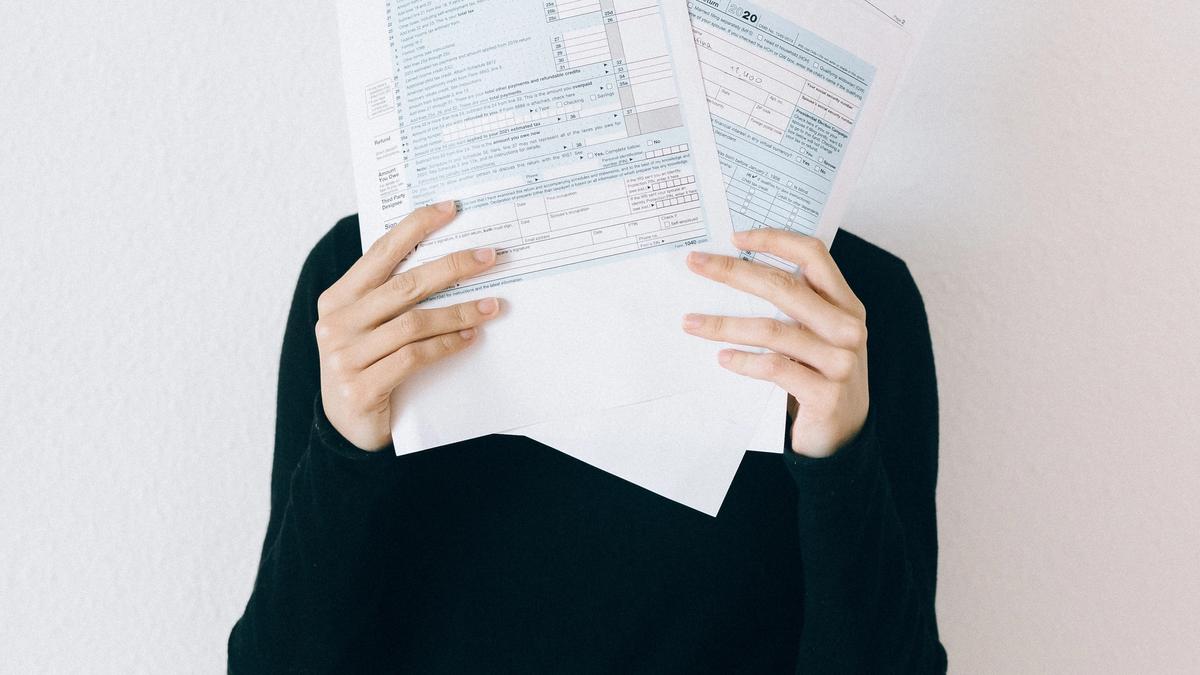As a freelancer, you are your own boss and enjoy the freedom to work on your terms. However, with great independence comes great responsibility. One of those responsibilities is understanding how to file your taxes correctly as a 1099 worker. The world of 1099 taxes can be confusing and intimidating for many freelancers, which is why in this blog, we will break down everything you need to know about 1099 taxes, from defining this particular type of income to deciphering self-employment tax rates. We will also explore various types of 1099 forms and how to navigate quarterly taxes efficiently. Additionally, we will provide tips on how to maximize your savings by claiming overlooked deductions while filing your taxes. Lastly, we will answer all your questions about eligibility for both a 1099 and a W-2, making it easier for you to take control of your finances confidently.
Understanding 1099 Income for Freelancers
1099 income refers to earnings received by freelancers as self-employed individuals. Instead of traditional W-2 forms, freelancers often receive 1099 forms for their payments. This income includes payments for services rendered as independent contractors. Freelancers are responsible for reporting and paying taxes on their 1099 income. Understanding the distinctions of 1099 income is crucial for freelancers to stay compliant with their tax obligations.
Defining 1099 Income
1099 income, which is earned by self-employed individuals, like freelancers and independent contractors, encompasses earnings from various sources such as: freelance gigs, consulting work, or rental property. Unlike W-2 income, 1099 income doesn't come with automatic tax withholdings, so freelancers must diligently track and accurately report their earnings to fulfill their tax obligations. This type of income can be reported on Form 1099-MISC or other specific 1099 forms.
Differentiating between Form 1099 and Form W-2
Form 1099 and Form W-2 are two different tax forms that serve distinct purposes. Freelancers often receive Form 1099 from clients, while employees receive Form W-2 from their employers. Form 1099 is used to report various types of income, including self-employment income, while Form W-2 is used to report income earned as an employee. The distinction between the two forms determines how taxes are calculated and paid.
Exploring Various Types of 1099 Forms
The IRS issues different types of 1099 forms to report specific types of income. Form 1099-MISC is commonly used for reporting freelance income, while other forms like 1099-INT and 1099-DIV are used for reporting interest and dividend income respectively. Each form serves the purpose of reporting income to the IRS, so it's crucial for freelancers to be familiar with the specific 1099 forms applicable to their sources of income.
The Main Purpose of Form 1099
Form 1099 serves as a means to report income received from various sources outside of traditional employment. It ensures that individuals accurately report their earnings to the IRS, allowing recipients of this form to complete their tax returns correctly. Beware that failing to report income reported on Form 1099 can lead to penalties and increased IRS scrutiny.
Deciphering Self-Employment Tax
Self-employment tax, a tax imposed on self-employed individuals to fund Social Security and Medicare, is an important aspect of managing freelance finances. Freelancers are responsible for paying both the employer and employee portions of these taxes, in addition to federal income tax and any state or local taxes. Understanding self-employment tax helps freelancers avoid surprises during tax season and ensures they can effectively calculate and pay their taxes.
Decoding the Self-Employment Tax Rate
The self-employment tax rate, currently at 15.3%, is divided into 12.4% for Social Security and 2.9% for Medicare. Freelancers have the advantage of deducting the employer portion of self-employment tax from their adjusted gross income, unlike traditional employees. It's important to note that the self-employment tax rate is higher than the combined employer and employee portions of Social Security and Medicare. Familiarity with this rate enables freelancers to accurately estimate their tax liability.
Navigating Quarterly Taxes
Freelancers are required to make regular quarterly estimated tax payments throughout the year. These payments help freelancers meet their tax obligations in a timely manner. Failing to make these payments can lead to penalties and interest charges. Calculating quarterly tax payments accurately can be done using IRS forms or through tax software.
How to Effectively Pay Your 1099 Taxes
To effectively pay your 1099 taxes, it is important to keep accurate records of your income and expenses. This will ensure that you report your taxes correctly and take advantage of any applicable deductions. Consider utilizing tax software or consulting with a tax professional to accurately calculate your tax liability and maximize your deductions. To avoid financial strain during tax season we suggest you set aside money each month specifically for your tax payments. Additionally, consider making electronic payments to the IRS for convenience and ease. Regularly review and update your tax strategies to maximize deductions and minimize your tax liability.
Tools Available to Assist with 1099 Tax Payments
To simplify the process of managing your 1099 tax payments, there are several tools and resources available. Tax calculators can help you estimate your tax liability accurately, while accounting software can assist in tracking your income and expenses throughout the year. Online platforms offer guidance and support specifically tailored to self-employed tax filers. Additionally, there are mobile apps that can help you keep track of receipts and mileage for potential deductions. It's also wise to consult with a CPA or tax advisor to ensure compliance with IRS regulations.
Strategies for Maximizing 1099 Tax Savings
To maximize 1099 tax savings, self-employed individuals can take advantage of various strategies. They should explore tax deductions available for small business owners and keep thorough records of business expenses. Contributing to a retirement account can help reduce taxable income. Understanding the qualified business income deduction is essential for optimizing tax savings. Additionally, self-employed workers should consider utilizing tax credits, such as those for health insurance premiums. By staying organized you can minimize your tax bill and work towards your financial goals with more ease.
Commonly Overlooked Deductions for 1099 Workers
It's important not to overlook certain deductions that can help reduce your tax liability. One commonly overlooked deduction is for home office expenses. If you have a dedicated workspace in your home, you may be able to deduct a portion of your rent or mortgage, utilities, and other related expenses. Additionally, don't forget to include business-related travel and meal expenses, as well as any professional development or education expenses. Finally, make sure to keep track of any expenses related to marketing and advertising your freelance business.
A Deep Dive into 1099 Tax Rate
Understanding the self-employment tax rate is crucial for small business owners and self-employed workers. It differs from traditional employment tax rates as it includes both the employer and employee portions of Social Security and Medicare taxes. Additionally, high earners need to be aware of the additional Medicare tax. Knowing the tax brackets and how they affect your taxable income is essential for accurate tax calculations. Consider seeking help from accountants or tax professionals to navigate complex tax calculations and use the IRS's tax rate schedules to determine your tax liability.
How Much Should a Freelancer Set Aside for 1099 Taxes?
To ensure you're prepared for tax season, it's important to set aside a portion of your income for 1099 taxes. Consider calculating your estimated tax payments based on projected income and allocate at least 30% for federal and state taxes.
Demystifying the Process of Filing 1099 Taxes
Understanding the distinction between a 1099 and a W-2 form is essential for freelancers. Familiarize yourself with the Schedule C form, which is used to report self-employment income and expenses accurately. Be mindful of the deadlines for filing your tax return and making estimated tax payments; missing them can result in penalties. Keep meticulous records of your income and expenses throughout the year, as this will simplify the tax filing process. Utilizing tax software or consulting with an accountant can help ensure accurate and hassle-free filing.
Lowering Your Freelancer Tax Bill: Tips and Tricks
To lower your freelancer tax bill, there are several tips and tricks you can employ. First, maximize your business expenses by deducting eligible costs. This includes expenses such as office supplies, software subscriptions, and travel expenses. Additionally, take advantage of tax credits for education, energy-efficient equipment, or hiring certain individuals. Consider structuring your business as a sole proprietorship or LLC to potentially reduce taxes. Explore health insurance options that may be tax-deductible for self-employed individuals. Lastly, stay up to date with changes in tax laws that may impact your deductions or credits.
What Can You Write Off as a 1099 Employee?
You can deduct various expenses directly related to your freelance work such as; office supplies and equipment, expenses for professional services like legal or accounting fees, advertising and marketing for your freelance business, as well as any travel expenses for business-related trips. Lastly, keep track of necessary subscriptions or memberships that support your freelance work, these can include for example software like Adobe or cloud space services like Google Drive and Dropbox.
Claiming Self-Employment Tax Deductions: A Step-by-Step Guide
To successfully claim self-employment tax deductions, it is important to keep detailed records of your business income and expenses. By subtracting your business expenses from your total income, you can determine your net earnings. To calculate your self-employment tax liability, you can use Schedule SE. Additionally, you may consider deducting half of your self-employment tax as an adjustment on your Form 1040. It is always recommended to consult with a tax professional to ensure that you are claiming all eligible deductions.
Are you eligible for both a 1099 and a W-2?
Understanding the distinction between being an independent contractor and an employee is crucial. Assessing if you meet the criteria for receiving both a 1099 and a W-2 is important. It's also essential to be aware of the tax implications and consider the advantages and disadvantages of each employment classification. Consulting with a tax professional ensures proper reporting for both a 1099 and a W-2.
Conclusion
In conclusion, navigating the world of 1099 taxes can be overwhelming for freelancers. However, understanding the basics and taking advantage of available resources can help simplify the process. Remember to accurately report your 1099 income, differentiate between Form 1099 and Form W-2, and explore the various types of 1099 forms. Additionally, be aware of self-employment tax and quarterly tax requirements. Utilize tools to assist with tax payments, always consult with a tax professional, maximize your tax savings through deductions, and set aside an appropriate amount for taxes. Finally, familiarize yourself with the process of filing 1099 taxes and determine your eligibility for both a 1099 and a W-2. By staying informed and proactive, you can effectively manage your taxes as a freelancer and succeed while doing it.






